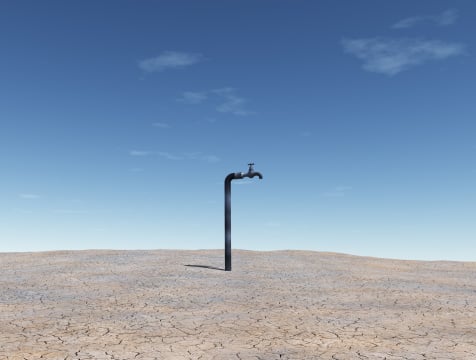
Source: Thinkstock
A new report issued on Sunday by the United Nations World Water Assessment Program emphasizes the need to meet availability and sustainable management of water and sanitation for all the world’s people.
Groundwater currently supplies about 50% of the world’s population with drinking water and 43% of all water used for irrigation. As groundwater levels decline, people have begun to tap the aquifers, and now an estimated 20% of the world’s aquifers are over-exploited.
The report notes that by 2050 the world’s population is expected to reach 9.1 billion, with about two-thirds living in cities and an increase in the number living in slums beyond the 30% of all city dwellers currently living in slum conditions. Demand for drinking water and sanitation will rise as the population grows. A 2012 study by the World Health Organization estimated that an investment of $53 billion over a period of five years on drinking water and sanitation programs would return between $5 and $28 for every dollar invested.
ALSO READ: California Is Running Out of Water
Demand from agriculture, which already uses 70% of the world’s fresh water supply, will rise as more food is grown to feed the expanding population. As the world’s economy grows, demand for water to grow crops to feed and water livestock increases as more people eat more meat.
Energy production, which uses another 15% of the world’s fresh water, is expected to raise its demand to 20%. The report noted:
Meeting ever-growing demands for energy will generate increasing stress on freshwater resources with repercussions on other users, such as agriculture and industry.
Demand for water from manufacturing industries is expected to rise by 400% in the first half of the 21st century, with most of the increase coming in emerging economies and developing countries.
The impact of climate change is also noted:
Current projections show that crucial changes in the temporal and spatial distributing of water resources and the frequency and intensity of water-related disasters rise significantly with increasing greenhouse gas emissions.
ALSO READ: America’s Happiest (and Most Miserable) States
Sponsored: Attention Savvy Investors: Speak to 3 Financial Experts – FREE
Ever wanted an extra set of eyes on an investment you’re considering? Now you can speak with up to 3 financial experts in your area for FREE. By simply
clicking here you can begin to match with financial professionals who can help guide you through the financial decisions you’re making. And the best part? The first conversation with them is free.
Click here to match with up to 3 financial pros who would be excited to help you make financial decisions.
Thank you for reading! Have some feedback for us?
Contact the 24/7 Wall St. editorial team.



